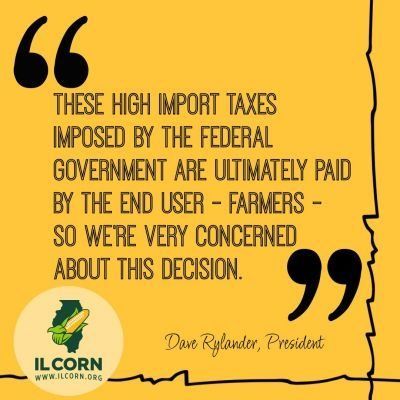IL Corn Growers Association Monitoring Fertilizer Tariffs and 2024 Crop Budgets

Bloomington – Last week, the US Department of Commerce set a tax of 7.41% on imports of phosphate fertilizer from Morocco and Russia, which is a decrease from the previous rate of 19.97%. The International Trade Commission also decided Wednesday night to maintain their initial determination that domestic industries suffered material harm from Moroccan imports. While Commerce’s new rate is a positive step, it’s higher than the 2.12% recommended in the administrative review.
"Fertilizers represent a major cost of production for corn farmers, so we’ve been advocating for more competition in the marketplace,” said Dave Rylander, ICGA President and farmer. “These high import taxes imposed by the federal government are ultimately paid by the end user – farmers - so we’re very concerned about this decision. We will continue working to lower input costs where we can and want our corn farmers to know that their profitability is a top concern for us.”
Also last week, the University of Illinois’s FarmDoc published a revised 2024 crop budget report showing negative average returns for farmers in all regions in Illinois. Fertilizer costs are estimated to represent about 35% of direct farm expenses. High input costs coupled with lower prices will have drastic impacts for farmers.
According to FarmDoc, farmers can potentially lower input prices on their own farms by considering if lower nitrogen applications can have positive impact on their bottom lines. Additionally, FarmDoc suggests conversations between landowners and tenants about variable cash rent leases which allow landowners to share in the farming risk and vary incomes and losses to market conditions over time.
Resources for both considerations are available on FarmDoc and have been created in partnership with IL Corn.
For more history on this issue, please visit these previously published articles:
IL Corn Joins Others to Caution Commerce Secretary About Fertilizer Duties






